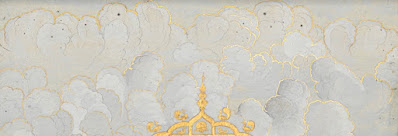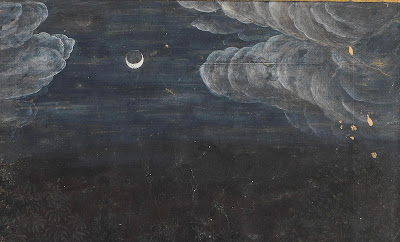Indian Miniature Paintings
images of Indian miniatures
Monday, May 12, 2025
Monday, January 27, 2025
Friday, May 31, 2024
Saturday, July 9, 2022
Tuesday, August 10, 2021
Thursday, June 17, 2021
Yogis, Saints
Sunday, November 29, 2020
Sunday, June 9, 2019
Company School Botanical Art
These botanical paintings were produced by Indian artists working in a style called Company School (kampani kalam in Hindi), which was based on Indian miniature painting but often had European influences. Many of the paintings were commissioned by Europeans in the 18th and 19th centuries.
Thursday, January 10, 2019
Thursday, July 20, 2017
Workshop and Exhibition of Miniatures by Ajay and Vinita Sharma
Master miniature painter Ajay Sharma and his wife Vinita will be having another show of their exquisite work at the Square Peg Studios, Marrackville, Sydney, opening Friday 1st Sept.
Not to be missed.
The exhibition will coincide with painting workshops taught by Ajay.
Not to be missed.
The exhibition will coincide with painting workshops taught by Ajay.
Tuesday, November 22, 2016
The Beautiful, Magical World of Rajput Art
William Dalrymple in The New York Review of Books:
‘Krishna and the Gopis on the Bank of the Yamuna River’; miniature painting from the ‘Tehri Garwhal’ Gita Govinda, circa 1775–1780.
Kronos Collections/Metropolitan Museum of Art
Kronos Collections/Metropolitan Museum of Art
Writing in the early years of the twentieth century, not long before the Partition of India and Pakistan, at a time when Hindu and Muslim Indians were beginning to think of themselves as separate peoples, Coomaraswamy exaggerated the differences between Rajput and Mughal painting, choosing to ignore the many commonalities; but he did so in passages of beautiful and deeply seductive prose. Rajput painting had a unique ethos, he wrote in Rajput Painting: Being an Account of the Hindu Paintings of Rajasthan and the Panjab Himalayas, which was published in 1916:
Rajput art creates a magic world where all men are heroic, and women are all beautiful and passionate and shy, beasts both wild and tame are the friends of man, and trees and flowers are conscious of the footsteps of the Bridegroom as he passes by. This magic world is not unreal or fanciful, but a world of imagination and eternity, visible to all who do not refuse to see with the transfiguring eyes of love.
As late as the 1950s, masterpieces that would now sell for hundreds of thousands of dollars could be bought for a few rupees from the impoverished descendants of Rajput princes or their dynastic court painters. This was the period when William Archer succeeded in assembling thousands of pages of Rajput art for the Victoria and Albert Museum in London; while private collectors such as Jagdish Mittal were able to form extraordinary collections on remarkably low budgets. This golden age for collectors continued through the 1960s and early 1970s, as Indira Gandhi’s fiercely socialist policies stripped away the assets of princely families, leading many to sell their entire miniature collections, flooding the market and reducing prices even further.
Monday, May 23, 2016
Ragamala Paintings from the Bibliotheque Nationale de France
Ragamala painting is a particular genre of Indian miniature painting, mainly from the 16th and 17th centuries. Ragamala means 'garland of ragas'. A raga is a particular mood, colour, season, time of day, or emotional state. A ragamala painting evokes one of these ragas in pictorial form.
There are six main 'parent' ragas, corresponding to the six Indian seasons: summer, monsoon, autumn, early winter, winter and spring.
Each of the male parent ragas has five 'wives' (ragini), and eight 'sons' (ragaputra) and 'daughters' (ragaputri), making a series, or garland, of eighty four.
The six main ragas are:
Bhairava raga - associated with winter, early morning, and the god Shiva.
Malkauns raga - autumn.
Hindol raga - spring.
Deepak (Dipaka) corresponds to the heat of summer.
Sri (Shree) raga - winter and sunset.
Megh raga - associated with the clouds of the rainy monsoon season.
The concept of raga is also found in Indian classical music and poetry. Some ragamala paintings illustrate the story of a hero (nayaka) or heroine (nayika).
Here is a collection of beautiful Ragamala paintings from the collection of the Bibliotheque Nationale de France.
Bhiaravi
Gujari
Hindol
Malavasri
Malkos
Meghamalara
Pancama
Sri
Todi
Varngali
Subscribe to:
Posts (Atom)















































